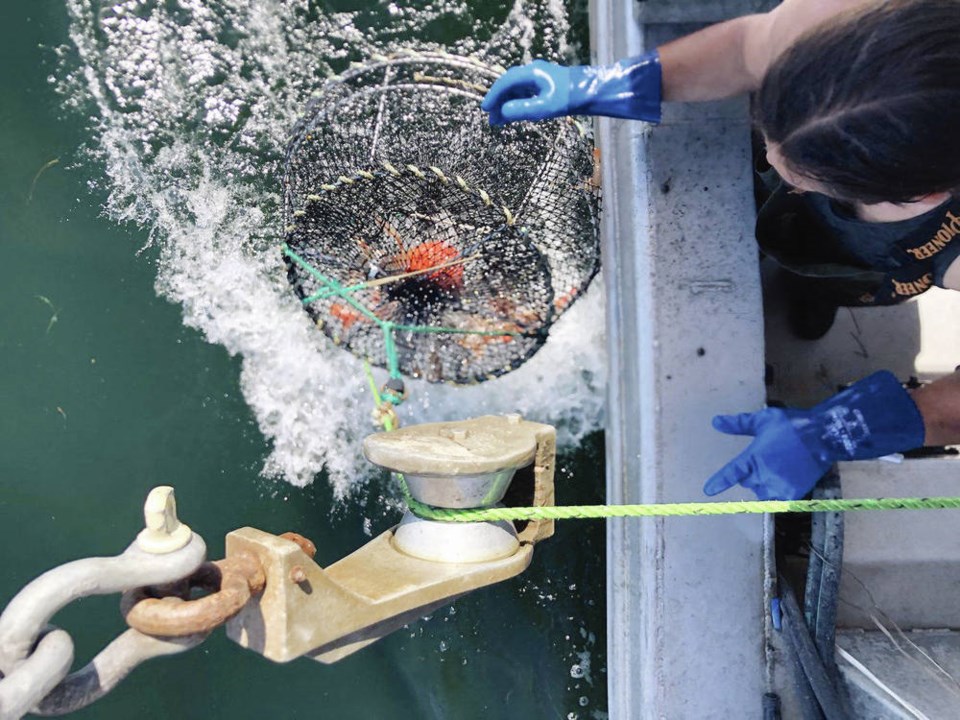Hundreds of sa���ʴ�ý spot prawn harvesters might soon be out of a job because of a recent decision by Fisheries and Oceans sa���ʴ�ý that makes selling spot prawns frozen at sea illegal.
Freezing prawns in tubs of salt water is a long-standing practice in the province’s $45-million spot prawn fishery and is vital to local sales. It has taken on even more importance since the pandemic started, as many harvesters, most of them working from small boats, aim to sell more of their catch locally after international markets crashed last year.
“We saw a real expansion of local sales of both live and frozen prawn tails that effectively saved many harvesters in terms of their (financial) viability last year,” said Emily Orr, lead representative for the Prawn Industry Caucus.
The industry has spent years working with the provincial Ministry of Agriculture, Food, and Fisheries to bolster local sales, but the effort really took off last year. “For DFO to turn around and say, ‘No, you cannot freeze prawn tails’ … it’s a real disservice to all the work that’s been done — but much bigger than that is the damage to people’s profitability,” she said.
The change follows a reinterpretation by DFO of a decades-old traceability regulation. Under the rule, seafood must be packed to ensure fisheries inspectors can easily check that the products are within size limits. DFO hasn’t enforced the rule this stringently since size limits were introduced as a management tool for the fishery in 1979.
Orr pointed out that verifying the size of prawn tails packed in tubs is already simple for inspectors. Running water over the tails can melt them out of the tubs within minutes, she said. Independent observers and DFO officers regularly check prawning boats during the season, and prawn traps have a minimum mesh size to ensure smaller prawns can escape, she said.
Furthermore, she said DFO had not raised concerns with harvesters about the practice of freezing prawns in tubs until this year.
It’s a concern echoed by others affected by the decision.
“If this is truly about better resource management, DFO should be working with independent fish harvesters to design a solution that will achieve conservation objectives while also avoiding harm to the many coastal residents and families … this fishery supports,” Tasha Sutcliffe said in a statement. Sutcliffe is senior fisheries adviser with Ecotrust sa���ʴ�ý, an organization that helps rural, remote, and Indigenous communities build more sustainable economies.
Selling frozen prawn tails locally is key to staying afloat this year for many harvesters: Wholesale prices have tumbled to roughly half their pre-pandemic levels. An oversupply of frozen prawns — remnants from last year’s bumper harvest — means they will likely remain low for the foreseeable future, she said.
sa���ʴ�ý Agriculture, Food, and Fisheries Minister Lana Popham has been in touch with DFO about the new interpretation. Her ministry is seeking a written policy from DFO that will allow harvesters to freeze prawns at sea, a spokesperson said in a statement.
“Our government supports a cautious approach to fisheries management, one that prioritizes the health and conservation of stocks,” DFO said in a statement.
“We are aware of the importance of the ‘tubbing’ practice to some harvesters … (and) will work collaboratively with industry this season on these changes and ensure harvesters have the support they need now while working towards a long-term solution.”
For prawn harvesters, there’s a lot at stake.
“Our connection to the seafood we harvest isn’t just connected to the deck of our boats,” said Cailyn Siider, a Sointula-based harvester.
“Sharing and selling our catch to feed our family, friends, and communities is an integral part of our livelihood and culture. This sudden and perplexing reinterpretation of regulation by DFO threatens … everyone who depends on spot prawns for food, both as a premium product and for subsistence.”



